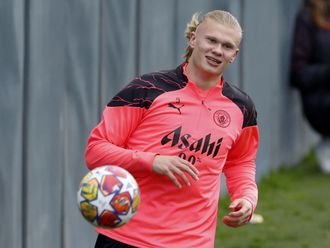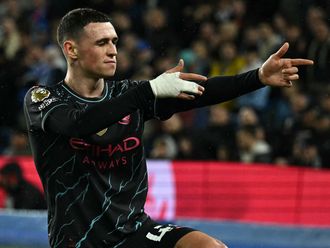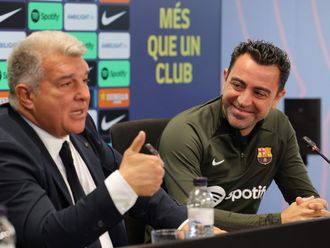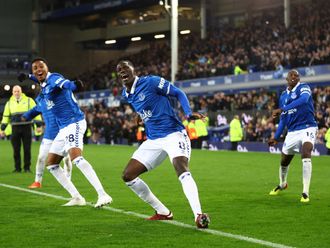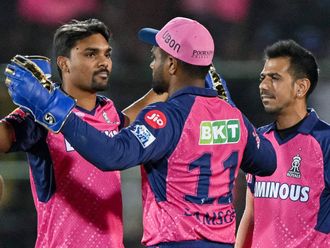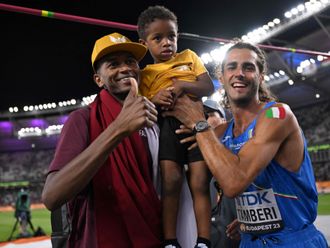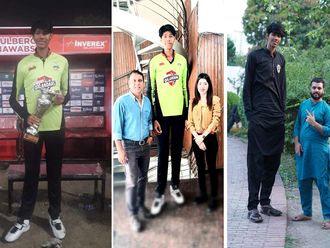When you are a model, Bollywood superstar and international sex symbol it must be difficult to get your kicks. Fortunately for John Abraham, something came along for him last year. Abraham would co-own one of the eight clubs in the inaugural Indian Super League.
The 42-year-old is as football-obsessed as they come. In his younger days he played professionally as a pacy centre-forward and he was on course to represent the India national team when his life reached a crossroads.
“I had to decide whether to pursue an educational career or play football,” Abraham says. “There was no money in sport back then. I chose the educational path and I did my MBA.
“I became a model after that. Can you believe? Every-body expects models to be walking around like Zoolanders, but fortunately for me I was educated.”
It is fair to say that Abraham has it all and any regrets must surely be thin on the ground. For a moment, however, he feels a pang. “If I was at that age again and I was given the same choice today between football and education, I probably would have chosen the Indian Super League,” he says.
Abraham, who co-owns NorthEast United, is at the forefront of a group of Indians who are trying to crack what is football’s final frontier — to change the culture of India’s 1.252 billion population and offer a viable alternative to cricket.
The ISL launched last October in a blaze of razzmatazz, with the opening game in Kolkata drawing a crowd of 65,120 and, for the 10 weeks that followed, the organisers went all in.
There was a match every night across Star’s prime-time TV platforms, with the home-and-away league format leading up to semi-finals and a final, which was won by Atletico de Kolkata. They are co-owned by Sourav Ganguly, one of four Indian cricketing greats to hold a stake in a club — the others are Sachin Tendulkar (Kerala Blasters), Mahendra Singh Dhoni (Chennaiyin FC) and Virat Kohli (FC Goa). In India, celebrity is king.
It was short yet extremely sharp, designed to maximise appeal, and when the dust had settled the numbers were impressive. There had been a tapering off after the high point of the opening game, when fans were attracted to the novelty factor, yet attendances stabilised and then began to climb. The average would be 26,030, which made the ISL the fourth-best attended league in the world, behind the top divisions in England, Germany and Spain.
India tunes in
Across India, 426 million individual viewers had tuned in, with 57 per cent of them women and children.
The planning is under way for the second season, with the acknowledgement that if bold steps have been taken, there remain many more to go. Yet the journey so far has been exciting and it is impossible not to feel the exuberance of the league’s power-brokers.
“It did enter the mass consciousness,” Andy Knee, the vice-president of football at IMG, which is one of the league’s owners, says. “People started to think ‘I’ve come for the show but I’ve stayed for the football’ and that was fine by us. “We’ve had something that gives us enormous belief. We think ‘This has happened in year one; now we can kick it on’.”
India is projected to be the world’s fifth-largest economy by 2020 and 65 per cent of the population is under the age of 35. Moreover, according to research, the key demographic of 13 to 35-year-old urban dwellers are seriously into football. Perhaps not so much the ISL (yet), rather the English Premier League and the challenge for the former is to pick up the wave of the latter.
“Everybody in India realises there is this need for a second sport,” Rahul Patil, the chief executive of NorthEast United, says. “You need one that is quicker and cooler and football is a cool sport. What makes it cool? The exposure of the Premier League.
“This is the mentality of the kids nowadays. It is the Premier League because of the broadcasting, the way the packaging is done. It’s there. We have a grassroots programme and we have kids wearing Man U jerseys. My seven-year-old son supports Man U. They have done in-your-faces branding everywhere and it’s stuck.”
Peter Reid, the former Everton and England midfielder, was the manager of Mumbai City FC last season, and he could not fail to be struck by the influence of the Premier League. “There’s people walking around Mumbai in Liverpool shirts, Manchester United shirts, the odd Everton shirt ... I’m not lying,” Reid says, with a smile.
“I went to watch the Merseyside derby in a bar and there was a Liverpool supporters’ club in there. There were loads of them. And I’ve seen Manchester United and Chelsea supporters’ clubs in bars, too. The banter is amazing. They’ve got a love for the football and the interest generated from the Premier League has kicked on to the Indian Super League.”
The Premier League has sought to help its little brother in India. It has a mutual cooperation agreement in place, which allows the Premier League to pass on expertise. Recently, it hosted a delegation from each of the Indian clubs.
The ISL has a different structure, with Star, IMG and Reliance Industries — India’s largest private company — serving as the paymasters. There is no competitive tender for the broadcast rights, because of Star’s monopoly, and the clubs get none of the TV money. They make their rupees through gate receipts and sponsorship deals.
Salary cap
Broadly speaking, the clubs — who pay a significant franchise fee — must adhere to a salary cap. Some learned hard lessons in the first season, particularly with regard to the signing of marquee players.
Alessandro Del Piero (Delhi Dynamos) and Nicolas Anelka (Mumbai) arrived on deals worth in excess of $1.5 million (Dh5.51 million), only to misfire, and then there is the story of Freddie Ljungberg. He managed only a handful of games for Mumbai before he succumbed to injury and wanted to go home to Sweden for treatment. Ljungberg had to be reminded he had responsibilities at the club as a figurehead.
The glamour names chimed with what India wants. Zico managed Goa, Elano starred for Chennaiyin and Luis Garcia helped Kolkata to the championship. Robert Pires laboured in the searing heat for Goa, but he was inspirational off the field and feted by the Arsenal fans in the state.
Abraham, though, doubts the wisdom of such signings and he asks whether “we are going to go down the MLS route, where we look at semi-retired players, or are we going to look at young, fresh talent and build our own stars?”
There is one English club that he admires above all others. “Southampton, a very strong business model,” Abraham says.
And his favourite Premier League player is also at St Mary’s. “Sadio Mane,” he says. “I absolutely love him. He is brilliant.”
Part of the ISL’s mission statement is to turn India into a “global football power and qualify for the 2026 World Cup”. Right now, as they sit joint 159th in the Fifa rankings with Puerto Rico, the dream seems a long way away.
Teething problems
There have been teething problems for the league and plenty of challenges, most of them connected to the lack of footballing infrastructure. “We are playing in the middle of athletics tracks and cricket stadia,” Knee says. “And the game is not really played in schools. There are no structures.”
Reid describes the facilities as “not great” but he says “they will improve”. As an aside, he compares the playing standard to that of the Championship. “Lower Championship standard,” Reid clarifies.
Yet the optimism bubbles and nobody typifies it more than Abraham. India will host the Under-17 World Cup in 2017, there are plans for the clubs to form youth academies, and Abraham wants to see the ISL eventually amalgamate with the old I-League to run over eight months. He would like there to be promotion and relegation between two divisions.
Abraham is the most high-profile of cheerleaders and he has embraced the role. “Before each NorthEast United home game, and even before some of the away ones, I run one lap of the pitch and I stop before sections of the crowd,” he says. “I throw my arms up and the decibel levels are shattering. The fans are just screaming.”
Abraham has his kick.
— Guardian News & Media Ltd


